

Saluting U.S. Nationals history: The story of Marvin "Who?" Graham
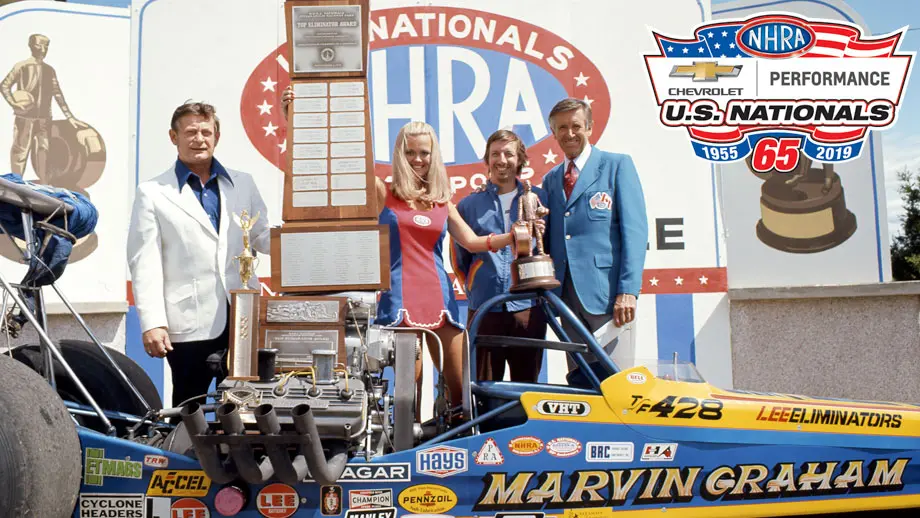
The 65th annual Chevrolet Performance U.S. Nationals is coming up, and promises to be a celebration of the event’s long and rich history. In the months leading up the event, I’ll chronicle some of the great stories that made Indy the world’s biggest and most important drag racing event.

One race does not a career make, but if there were ever a person who could say that one race win changed the course of their career, it would be Marvin Graham.
Graham came almost from nowhere to win Top Fuel at the 1974 U.S. Nationals, a victory at the sport’s biggest, toughest event, and most prestigious that was so stunning that it earned him the nickname “Who?” after National Dragster asked the question "Marvin Who?".
The victory catapulted the relatively unknown 32-year-old Oklahoma City television repairman into the national spotlight and opened future doors that allowed him to become a full-time racer and world championship contender and a prime example of the magic of Indy.
The improbable nature of the story is so deeply layered in grit and determination and perseverance that helps make Graham a poster child for everything that a U.S. Nationals victory should be.
Even though he had been racing in Top Fuel since 1967, until the 1974 U.S. Nationals, Graham had attended only one other NHRA national event. From 1967 through 1972, Graham never strayed far from home, running in Oklahoma, Texas, Kansas, and Missouri -- even Louisiana was a bit of a hike.
After parting company with longtime partner Leon Grooms prior to the 1973 season, Graham set out on his own, and made the unprecedented decision to tow his new dragster to Bristol Dragway in Tennessee for the IHRA All-American Nationals in 1973, where he was the surprise runner-up behind Pat Dakin.
“That’s the furthest east I’d been from Oklahoma, and all of the heavy hitters were there,” he remembers. “We didn’t win the race, but it did prove to me that I could fight with the big boys and do all right.”
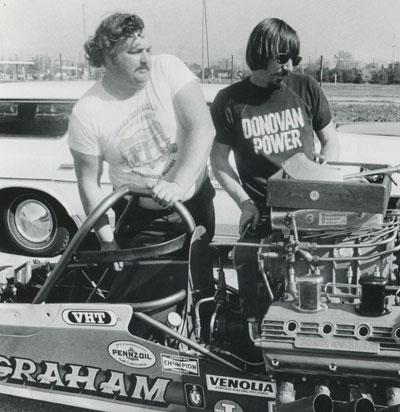
To make ends meet, Graham split time between his racing and the family television repair business, Graham Radio and Television, a small one-man operation in small-town Britton, Okla., an Oklahoma City suburb that had been a map dot gas stop on famed Route 66 until 1953. Graham, who had no formal education in television repair, left his job in the auto parts world to take over the business after his father suffered a heart attack. Yet, armed with the knowledge he had absorbed being around his father, and being generally good with his hands, he picked it up quickly.
His team wasn’t big -- usually just him, crew chief Chester Garris (pictured with him at right), and local boy Steve Hodkinson (who also would go on to become a nitro racer) -– but they made it work. With every run, every event, they gained experienced and cast an eye on Indy.
Well-known California engine empresario Mike Kuhl, who with driver Carl Olson had one of the strongest cars on the West Coast and were fresh off one of their biggest wins at the March Meet, talked Graham into upgrading to a 3/8-stroke engine in preparation for the Big Go, and offered to bring the parts -- including the shiny new Velasco crank, rods, and pistons -- east with them, stopping over at Graham’s shop on their own way to Indy.
When they arrived they found Graham suffering from a nasty case of flu and hedging his bets about even going to the race.
Recalls Olson, “Kuhl managed to round up what he needed, and we loaded it into our trailer and headed to Indiana. We stopped off at Marvin’s place to deliver the parts but Marvin said that he doubted he’d be healthy enough to put a motor together and make it to Indy in time to qualify.
“Kuhl read him the riot act -- called him a weak suck, said that if he didn’t make it to Indy after all the trouble we’d gone through to get him the parts that he’d never live it down All of this was said in the spirit of friendly verbal sparring, but there was definitely an underlying implication that failure to make it to Indy would be unacceptable for a true racer.”
There’s no pressure like the pressure a fellow racer and friend can put on you, so Graham swaddled himself in a blanket in the shop and instructed Garris and Hodkinson exactly what they had to do to get the car ready for Indy. Once the car was ready, they bundled him and his blanket in the sleeper portion of the crewcab and headed out for their appointment with destiny.
The 1974 U.S. Nationals was an umbrella salesman’s wet dream. Rain cut qualifying to just a day and a half, and Graham and Garris earned a top-half qualifying spot with a 6.165 -– more than a tenth quicker than their previous career best of 6.30 -- good for the No. 10 spot in the 32-car field, but almost a tenth behind Jerry Ruth’s field-leading 6.073.
The opening rounds were a field-favorite massacre. Points leader Dave Settles went up in smoke against Sarge Arciero and the Jade Grenade team, who came up with a bolt-from-the-blue 6.01 that ended up being low e.t. of the meet. Larry Dixon Sr. dethroned “the King” with a sizable 6.20 to 6.24 holeshot win.

Gary Beck, who had his own semi-“Who?” moment in winning the 1972 U.S. Nationals but then backed it up with another Indy win in 1973, battled tire vibration woes throughout qualifying and landed just 19th, then sheared the wheel studs on the Export A dragster in round one and lost a wheel at halftrack. Kuhl & Olson, runner-up to Beck the year before, had qualified their "Da Revell Fast Guys" entry a solid No. 4 at 6.09, but lost to No. 20 qualifier Grant Stoms.
Graham, meanwhile, began his march toward victory with a 6.19 to 6.42 conquest of Gary Hazen's "Panic!" entry followed by a second-round 6.18 to defeat No. 2 qualifier Hank Johnson, who went up in smoke.
With nasty weather closing in, Graham uncorked his own surprise pass, a 6.08, to defeat Jim Herbert to advance to the semifinals. "It was misting so badly I had to use the back of my driving gloves to wipe my goggles clean,” said Herbert, yet both drivers made full pulls with Graham getting the big win.
Not long after Dwight Hughes defeated Ted Wolf to join Graham, Funk. and R. Gaines Markley in the semifinals, the rain returned and put an end to the day’s racing.
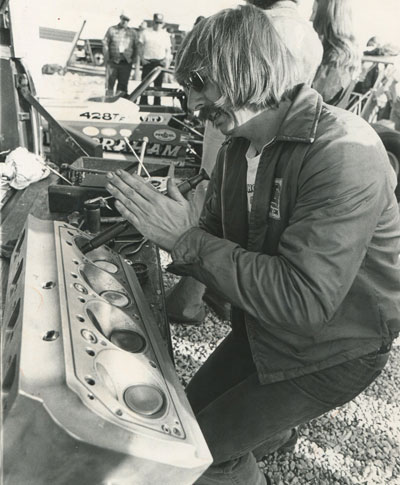
“Those were the days when you still had to take your rig out of the pits every night and back to the motel,” recalls Graham. “It was raining and cold as hell, but we found an open gas station and rented his stall, backed the car in there and serviced it, then finally went back to the hotel.
“By that time, I wasn’t deathly ill anymore and welcomed another day to recover. Even though the car had been running like a bandit before the rain, I don’t remember us being concerned that the track had changed. We knew it would be clean, and in those days we didn’t really worry as much about the heat of the track of any of that scientific stuff that goes on now. We just looked at the air-density meter and adjusted the fuel and the jets and went out there by the seat of our pants. Honestly, there was not a lot of stuff to tweak; those were simple days.”
Markley, who had qualified just 21st, and Funk, the No. 3 qualifier with his Kentucky Moonshiners entry, went out first and Markley whipped Funk on a holeshot, 6.18 to 6.17. Graham matched that pace with a 6.18 of his own to defeat Hughes, who grenaded the blower off of the Berry Bros. & Hughes machine to put Graham into the biggest moment of his career.
“We were confident,” he remembers. “We didn’t really talk about it or let it get to us. We were just concentrating on what we were doing. We knew what the car was doing and adjusted according to conditions and just tried to treat it like any other race. I was a pretty phenomenal win. I was almost numb until we beat Gaines in the final. It didn’t hit home until I had the Wally in my hands. It took a while to sink in.”
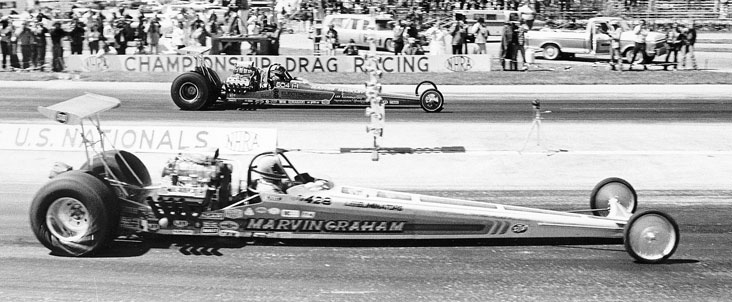
The final was over early as Markley, runner-up at the 1973 season-ending World Finals in Ontario, Calif., went up in smoke shortly after this photo was taken and Graham powered to a steady 6.17 for the biggest win of his life, which netted him about $21,000 in cash and contingencies, a real windfall for him.
“For a guy from Oklahoma City that was a lot of money,” he remembers. “ I called home and told my mom I had won and she said, ‘How much did you win? and I said ‘25’ and she said ‘$2,500, that’s a lot of money!’ I said, ‘No Mom, $25,000.’
“I had a little home in Britton, Okla., and I was able to move the family to a bigger house with some of the winnings,” he added,
Graham earned his famous “Who?” nickname as soon as the Sept. 13, 1974 issue of National Dragster hit mailboxes across the country, thanks to this lead paragraph:
During the midst of Top Fuel eliminations at the 20th Annual U.S. Nationals, there were a lot of folks, contestants included, who were scratching their heads and mumbling, "Marvin Who?"
The article also concluded with this rather forward yet prescient proclamation: “at the conclusion of the event, there was no shadow of doubt in anyone's mind that Marvin Graham … had established himself as a major Top Fuel power.”
As the record will show, he was far from a one-hit wonder.
For Marvin Graham, there will always be life before Indy 1974 and after Indy 1974, each memorable in their own right.
Graham got his start in racing in the 1960s, running a C/Dragster in Comp against the likes of Charlie Smith’s killer Plain Vanilla entry. He graduated to Top Gas running 8.40s, but they stayed local as partner Grooms didn’t like to travel.
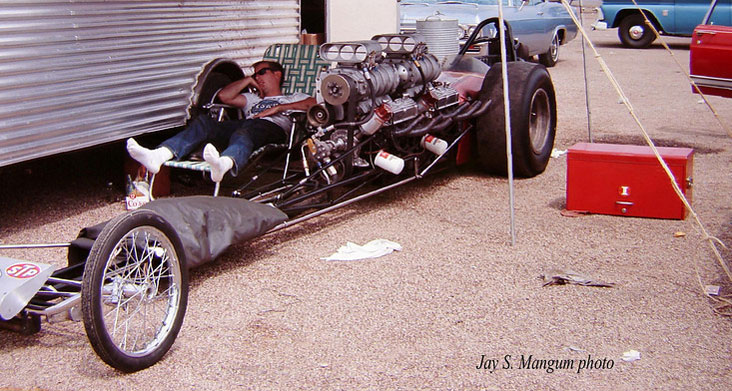
That led to a weird twin- engined front-motored Top Fueler powered by a pair 289 Fords that ran in the 7.30s, followed by a more conventional 392-powered slingshot.
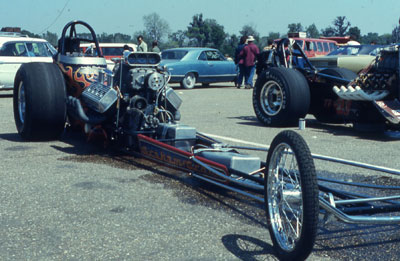
"Most of our stuff was handbuilt,” Graham remembers. “Leon had a lot of talents and both of us were not bad with our hands. We had a shop behind his house that we called 'The Shack.' We hung out there there building street cars, which is where I learned how to weld. We learned on the fly; we even built our own foundry in the backyard and cast a lot of our own parts, like valve covers.”
They built another front-engined car in 1973 and, in an effort to stave of the ultimately inevitable switch to a rear-engined car, they had the engine way out in the chassis –- about 43 inches when 28-20 might have been normal.
“Garlits was going with the rear-engine car but we were stubborn and thought we could build a car that was still competitive. We were wrong. Leon eventually decided he wanted to go sprint car racing, so I had Mike Stewart, a chassis builder in Oklahoma City, build me a rear-engine car.”

That was life before the Indy win. As soon as he won Indy, the notoriety -– and more success –- followed swiftly.
“After I won Indy Bill Doner called me he was running the PDA race at Orange County [Int’l Raceway in Southern California] and they were offering a good deal of money, so I went out there and won it,” he recalled. “I suddenly got a lot of booked-in races and got on the paid-in list for some of the AHRA events.”
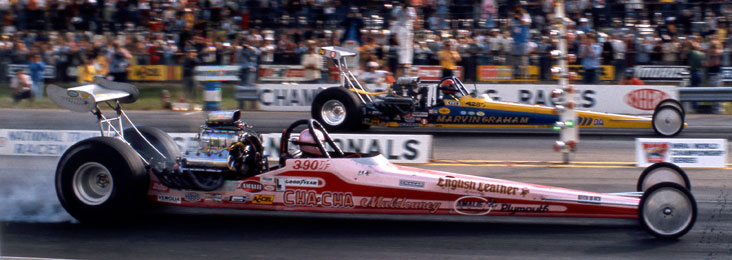
Graham seized on the momentum of his Indy win by winning the 1974 AHRA World Finals in Spokane, then struck again on the NHRA circuit at the 1975 Springnationals, a victory capped by a final-round victory over a first-time Top Fuel finalist: Shirley Muldowney. He finished the 1975 season an impressive third in points.
“One of my proudest things I have is a picture of my car at OCIR with No. 3 on it and the only names on it are mine a few small sponsors. I was always pretty proud to be No.3 in the whole world behind Garlits and Beck."
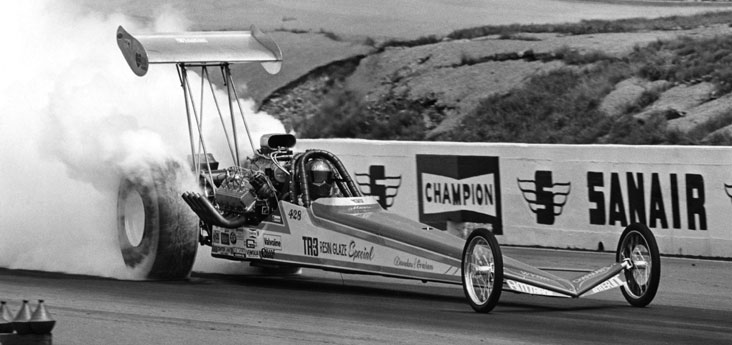
He won the PDA points title –- a three-race series that spanned Orange County, Seattle, and Portland –- and later added back to back wins at NHRA’s stop in Montreal, in 1980 and ’81 behind the wheel of Marc Danekas' TR-3 dragster. He threatened to win Indy again in 1980, where he was the low qualifier with a 5.68, which at the time was the fourth-quickest run ever and the quickest in about five years, but fell in the third round to Jeb Allen, and scored another runner-up in Seattle later that year. He also scored runner-ups at the Winternationals and Golden Gate Nationals in 1981.
He finished fourth in points both of those seasons and had a real shot at winning the 1981 title, which came down to a four-person race between eventual champ Jeb Allen, Beck, Johnny Abbott, and Graham, but Graham’s bid ended when he smoked the tires in round one. His driving career ended early the next season when his ride in Ray Fischer’s dragster ran out of funding.
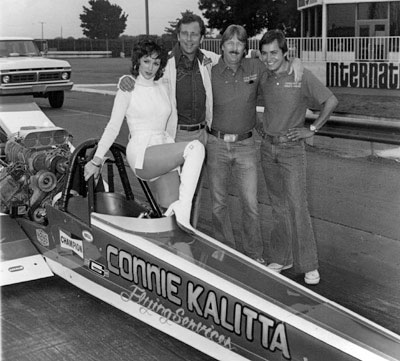
Graham ended up in the movie business –- he was the technical adviser and played Connie Kalitta’s crew chief in the 1983 Muldowney biopic Heart Like A Wheel –- and did a lot of other wheelwork driving camera cars in films afterward and got into the transportation side of the industry.
Still, he’ll never forget that it was drag racing -– Indy in particular -– that really put his name in lights.
“Without winning Indy, I don’t know where I would have been or what would have happened after that,” he admits. “I got that nickname from it that has stuck with me all of these years.
“I didn’t like the nickname at first because I knew who I was and I was pretty confident in my abilities but in retrospect it’s kept my name alive all these years.”
Phil Burgess can reached at pburgess@nhra.com
Hundreds of more articles like this can be found in the DRAGSTER INSIDER COLUMN ARCHIVE



















































